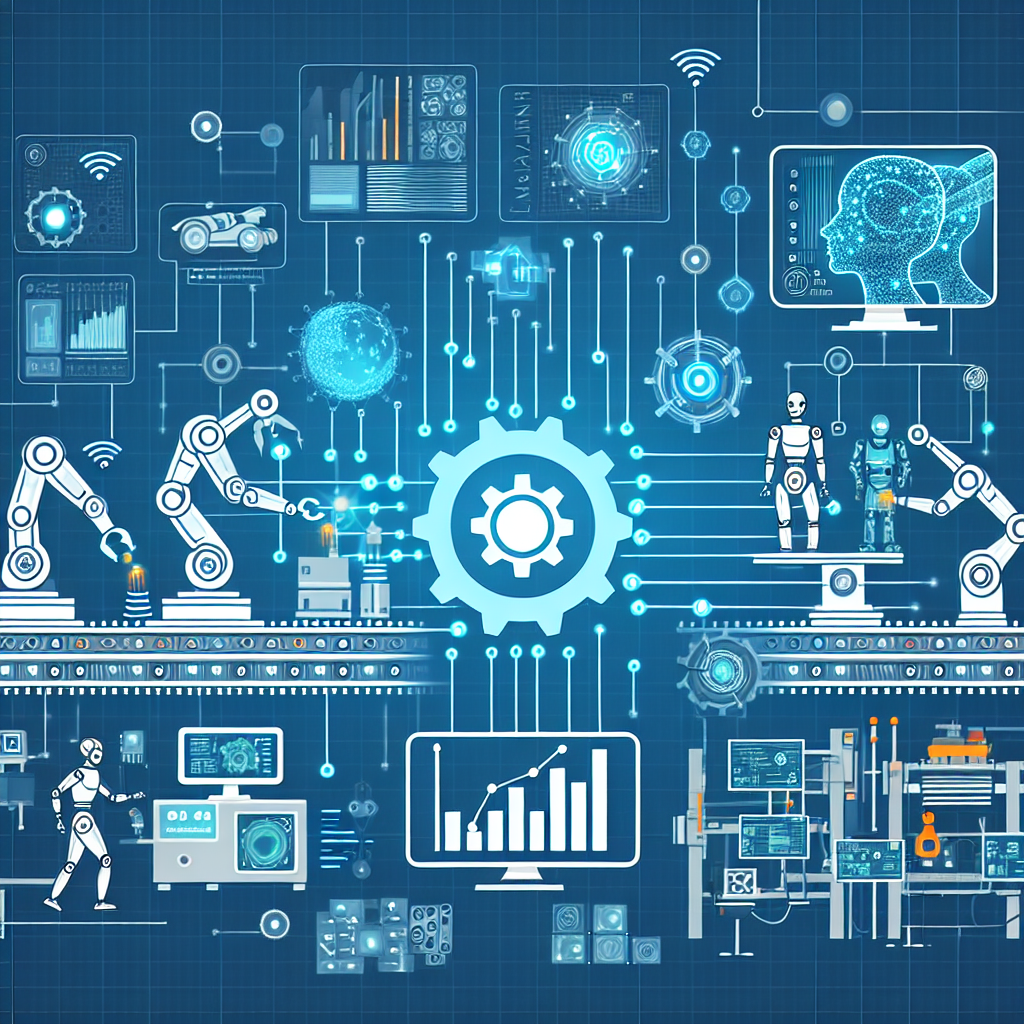Artificial Intelligence (AI) and Real-Time Data Analysis have been revolutionizing the manufacturing industry in recent years. With the ability to analyze massive amounts of data in real-time, AI is helping manufacturers optimize their processes, improve efficiency, and reduce costs. In this article, we will explore how AI and real-time data analysis are transforming the manufacturing sector, and discuss some of the key benefits and challenges associated with implementing these technologies.
AI and Real-Time Data Analysis in Manufacturing
Manufacturers have always relied on data to make informed decisions and improve their processes. However, the sheer volume of data generated in today’s manufacturing facilities can be overwhelming for human operators to analyze and interpret in a timely manner. This is where AI and real-time data analysis come in.
AI algorithms can quickly analyze large datasets and identify patterns, trends, and anomalies that might not be immediately apparent to human operators. By using AI-powered analytics tools, manufacturers can gain valuable insights into their operations, identify opportunities for improvement, and make data-driven decisions in real-time.
One of the key applications of AI in manufacturing is predictive maintenance. By analyzing real-time data from sensors and equipment, AI algorithms can predict when a machine is likely to fail and schedule maintenance before a breakdown occurs. This proactive approach to maintenance can help manufacturers avoid costly downtime and keep their operations running smoothly.
Another important use case for AI in manufacturing is quality control. By analyzing data from sensors, cameras, and other sources, AI algorithms can detect defects in products as they are being manufactured and automatically reject or rework faulty items. This can help manufacturers improve product quality, reduce waste, and minimize the risk of recalls.
Benefits of AI and Real-Time Data Analysis in Manufacturing
There are several key benefits of using AI and real-time data analysis in manufacturing:
1. Improved efficiency: By analyzing real-time data, manufacturers can identify bottlenecks, optimize production schedules, and improve overall efficiency. This can help reduce lead times, increase throughput, and lower production costs.
2. Enhanced quality control: AI-powered analytics tools can help manufacturers detect defects early in the production process and take corrective action before faulty products reach the market. This can improve product quality and customer satisfaction.
3. Predictive maintenance: By predicting when machines are likely to fail, manufacturers can schedule maintenance proactively and avoid unplanned downtime. This can help reduce maintenance costs and extend the lifespan of equipment.
4. Real-time decision-making: AI algorithms can analyze data in real-time and provide actionable insights to help manufacturers make informed decisions quickly. This can help improve agility and responsiveness to changing market conditions.
Challenges of Implementing AI and Real-Time Data Analysis in Manufacturing
While the benefits of AI and real-time data analysis in manufacturing are clear, there are also some challenges associated with implementing these technologies:
1. Data integration: Manufacturing facilities generate data from a wide range of sources, including sensors, machines, and enterprise systems. Integrating and harmonizing this data can be a complex and time-consuming process.
2. Data quality: The accuracy and reliability of data can vary depending on the source and how it is collected. Poor data quality can lead to inaccurate insights and flawed decision-making.
3. Skills gap: Implementing AI and real-time data analysis requires specialized skills in data science, machine learning, and analytics. Manufacturers may need to invest in training their workforce or hiring new talent to support these initiatives.
4. Security and privacy concerns: Manufacturing data can be sensitive and proprietary, making it a target for cyberattacks and data breaches. Manufacturers need to implement robust security measures to protect their data and ensure compliance with regulations.
FAQs
Q: How can AI improve efficiency in manufacturing?
A: AI can improve efficiency in manufacturing by analyzing real-time data to identify bottlenecks, optimize production schedules, and improve overall performance.
Q: What is predictive maintenance?
A: Predictive maintenance uses AI algorithms to analyze real-time data from sensors and equipment to predict when a machine is likely to fail and schedule maintenance proactively.
Q: How can AI help with quality control in manufacturing?
A: AI can help with quality control in manufacturing by analyzing data from sensors, cameras, and other sources to detect defects in products as they are being manufactured and take corrective action.
Q: What are some of the challenges of implementing AI in manufacturing?
A: Some challenges of implementing AI in manufacturing include data integration, data quality, skills gap, and security and privacy concerns.
In conclusion, AI and real-time data analysis are transforming the manufacturing industry by helping manufacturers optimize their processes, improve efficiency, and reduce costs. While there are challenges associated with implementing these technologies, the benefits are clear in terms of improved efficiency, enhanced quality control, predictive maintenance, and real-time decision-making. By investing in AI and real-time data analysis, manufacturers can stay competitive in today’s rapidly evolving market.

